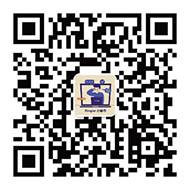Malta is a non-alcoholic beverage produced by brewers in a process under which wort is brewed before caramel is added to provide the characteristic brown colour. Vitamins are then added, before carbon dioxide is injected and then the final process is pasteurisation. Guinness Malta (Diageo) and Maltina (Heineken) are the major brands; Guinness Malta was first produced in Nigeria in 1990, whilst Maltina has an even longer heritage. Both products are well-established in the market with a widespread following aided by strong marketing of their locally sourced ingredients. The third largest brand is Amstel (Heineken) which has a slightly smaller presence, but is popular as a premium low sugar malt drink. Guinness Malta and Amstel have both grown consistently over the last few years, whereas Maltina took a stumble in 2009 but has since been back on the growth track.
 In 2012, Guinness Malta also launched a low sugar version to fit in with the health-consciousness trend. According to Canadean, Nigeria is the third largest malta market ranking behind Venezuela and Colombia. In Venezuela malta is a popular children’s beverage regularly found in school lunch boxes as a healthy energy source. In Colombia, the product is popular too, because malta is a more healthful drink compared to ‘mainstream’ carbonates. In Nigeria malta is used as a substitute for alcohol and is regularly found amongst the drinks provided at social gatherings.
In 2012, Guinness Malta also launched a low sugar version to fit in with the health-consciousness trend. According to Canadean, Nigeria is the third largest malta market ranking behind Venezuela and Colombia. In Venezuela malta is a popular children’s beverage regularly found in school lunch boxes as a healthy energy source. In Colombia, the product is popular too, because malta is a more healthful drink compared to ‘mainstream’ carbonates. In Nigeria malta is used as a substitute for alcohol and is regularly found amongst the drinks provided at social gatherings.
Malta is very much a part of the Nigerian culture and commands big sponsorship contracts. For instance Arsenal Football Club in 2012 chose Guinness Malta to be the official malt drink of the club in Nigeria for the next three years. The Amstel brand has strong connections with Nollywood.
Flavored malt-based drinks are also available on the market. These differ from malta in that they are unfermented non-alcoholic carbonates containing malt, sugar, malted barley and flavoring. There is only one malt-based drink on the market at present that is substantial enough to calculate volume, Heineken’s Fayrouz. Having only entered the market in 2006 its volumes have steadily grown but it has not reached the height of malta drinks. Fayrouz is popular in Middle Eastern countries as an alternative to alcohol, with its golden color and foamy head it shares a similar look.














